A pop-up canopy is a great way to get shade and comfort wherever you go. They’re easy to assemble and transport which makes them perfect for sporting events, outdoor parties and gatherings, crafts fairs, and farmers markets. However, the pop-up canopy does have one mortal enemy: wind. If the wind is strong enough, it can take your canopy up, up, and away. So how do you know how much is too much wind for your canopy to take and how can you help keep your canopy grounded? This article is here to help!
How Much Wind Can a Pop-Up Canopy Take?
Although the amount of wind a pop-up canopy can take varies by brand and model, generally speaking most pop-up canopies can withstand up to 30 MPH wind (assuming they are assembled and anchored correctly). For perspective, according to an article by the National Weather Service, a light breezy day can experience 0 to 12 MPH winds while a moderately windy day can get 13 to 30 MPH winds. Before choosing to use your pop-up canopy, check the weather forecast to ensure that the winds will stay under 30 MPH. If it is going to be windier than that, choose a different day to set up your canopy.
8 Tips to Secure Your Canopy Against Wind
Tip #1 Choose Sturdy Construction
When selecting a pop-up canopy, the right materials can make the difference. A pop-up canopy made from a sturdy material like steel or fiberglass is better able to resist wind than one made from aluminum.

Tip #2 Select a Canopy with a Vented Top
Another useful feature to look for when choosing a pop-up canopy, is a vented canopy shade. This type of shade features a designed hole in the top of the shade which allows air to escape from inside the roof of the canopy during windy conditions. Canopies that do not have this feature can fill with air during windy days which can cause them to be lifted off the ground.
Tip #3 Find the Right Location
When setting up your pop-up canopy, try to find a place that experiences the least amount of wind. Look for an area that is partially sheltered by trees or structures and be mindful of the wind direction. You must also consider the terrain. The ideal location will have even ground with firm soil so you can use stakes to anchor the pop-up canopy properly. Avoid areas that have soggy ground.

Tip #4 Carefully Read the Instructions
It is always important to read the assembly instructions before setting up your pop-up canopy. Failing to set up your canopy according to the supplier’s instructions can compromise the structural integrity of the pop-up canopy. Always use the recommended tools and ensure that you have the proper amount of people required to help set up the canopy.
Tip #5 Anchor Your Canopy
Once your canopy is assembled, use ropes and stakes to securely anchor your pop-up canopy if possible. Many canopies include stakes with the pop-up tent, but if you need to purchase them separately, look for durable stakes made of steel with a hooked head so you can secure the rope to them more tightly.
Using the right knot can also help. According to an article by Rolling Fox, one of the best knots to secure a tent is called the taut line hitch knot. This type of knot allows for optimal line tension while keeping the rope securely attached to the stake.
Attach the ropes to each corner of the canopy shade and use stakes to secure them deeply in the ground. Many canopies also feature feet with holes where additional stakes can be placed. If it is a windy day, more is better.

Tip #6 Use Weights
In addition to using tent stakes, try attaching sandbags or weights to the legs of your canopy. Canopy sandbags can be filled with a material like sand or pebbles and provide additional weight to help your canopy resist the wind. Weights are a must-have if you plan on using your pop-up canopy on asphalt or concrete and you are unable to use stakes to secure your canopy in the terrain. If you don’t have access to true canopy weights, try filling an old pillowcase with sand and tying it securely to the leg of the canopy.
Tip #7 Remove Sidewalls
Certain types of canopies feature sidewalls and while they provide additional privacy and refreshing shade, they can also make your canopy more susceptible to strong winds. Once the wind enters through the pop-up canopy opening, sidewalls can catch the wind like a sail and cause your canopy to slide across the ground or topple over. If it is possible, remove any sidewalls until the wind has passed or save them for a sunny, calm day.
Tip #8 If All Else Fails… Take It Down
Some days are simply too windy to use a pop-up canopy tent. If you have tried all of the previous tips and you’re still having trouble keeping the tent properly anchored, there is no shame in packing up your tent, especially if you are surrounded by other people. Remember, the only thing worse than having your canopy tent blow away, is having someone else’s canopy tent blow through your picnic or outing.
Hold Down Your Pop-Up Canopy and Enjoy Your Time Outdoors
A little wind does not necessarily mean that you need to cancel your outdoor canopy time. With a few precautions and taking the time to set up your pop-up canopy properly, you can enjoy your time relaxing beneath your canopy despite the wind. Just be prepared to move and pack up your canopy if a refreshing breeze turns into a mighty gust of wind.

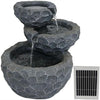
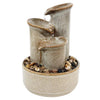

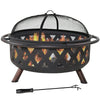
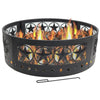

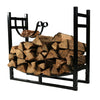
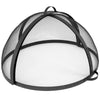
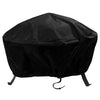
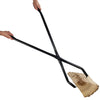
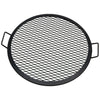
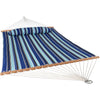
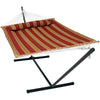
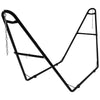

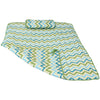
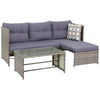
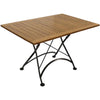
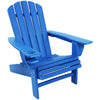
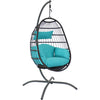

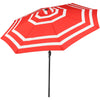
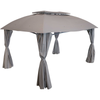



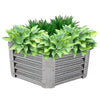
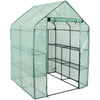
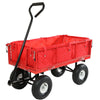
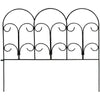
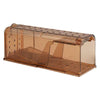
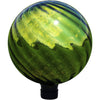



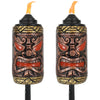


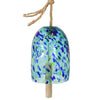



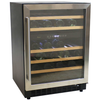
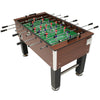
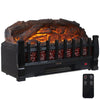
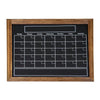













3 comments
Diane
We lost our d he’d roof.looking at my neighbours shed. He put some foamy stuff and a tarpaulin over shed still on. Do I have to do that.or can I use just tarpaulin
Bobi jo
You can screw it in to your deck. They asked how to keep it from blowing away off deck. We lower ours down when windy. We also have it screwed in to deck. We even leave it up all year round and live up north with snow I just clean it off. Have to replace it every 2 years
Mathias Jorgensen
Hello sunnydazedecor.com owner, Good to see your posts!